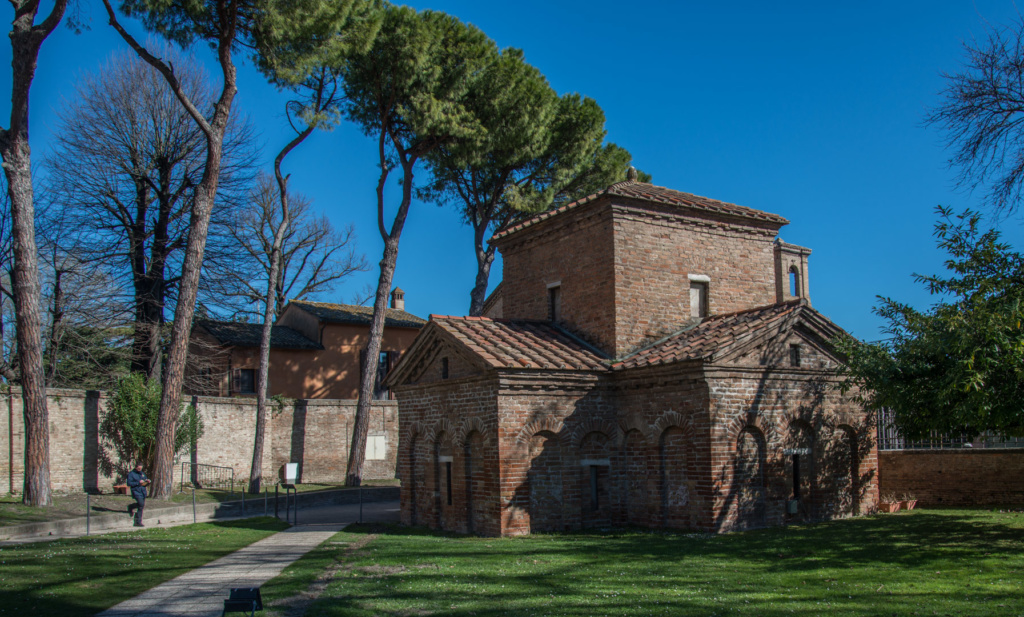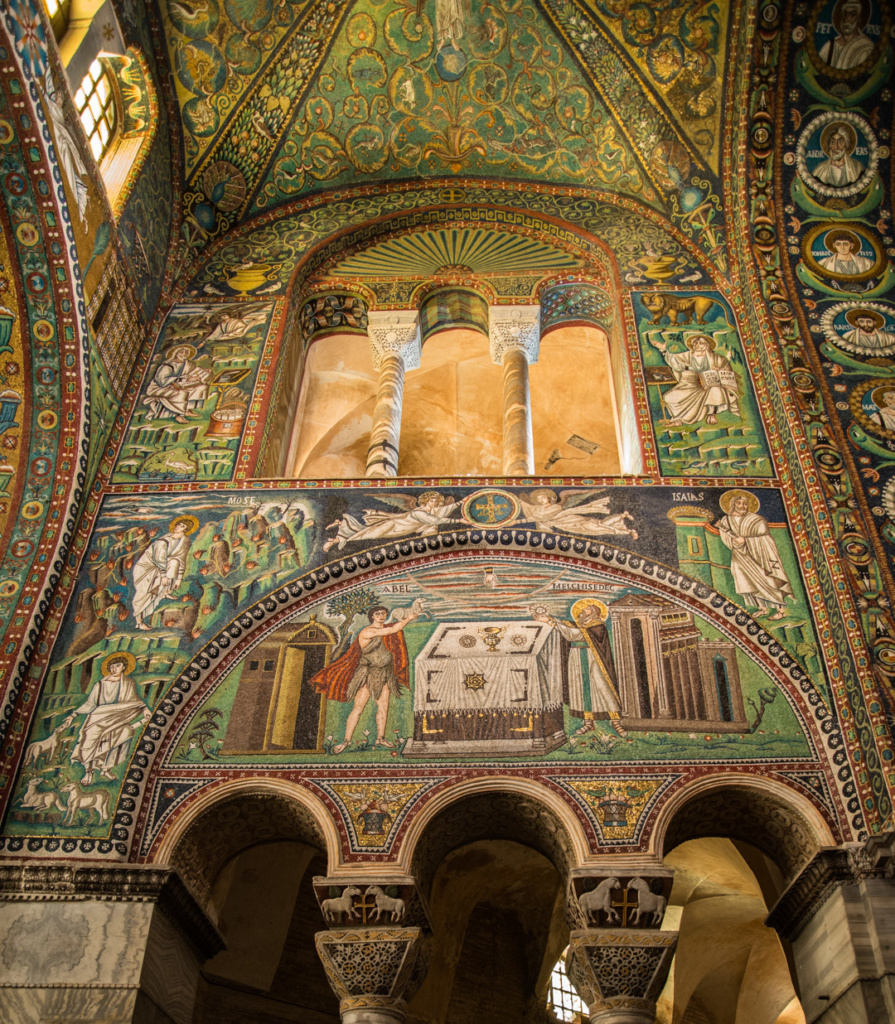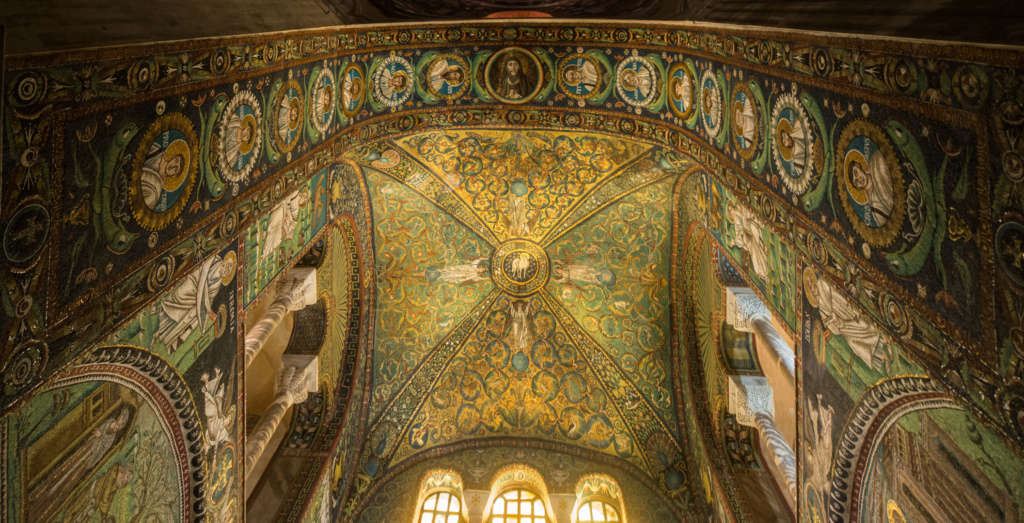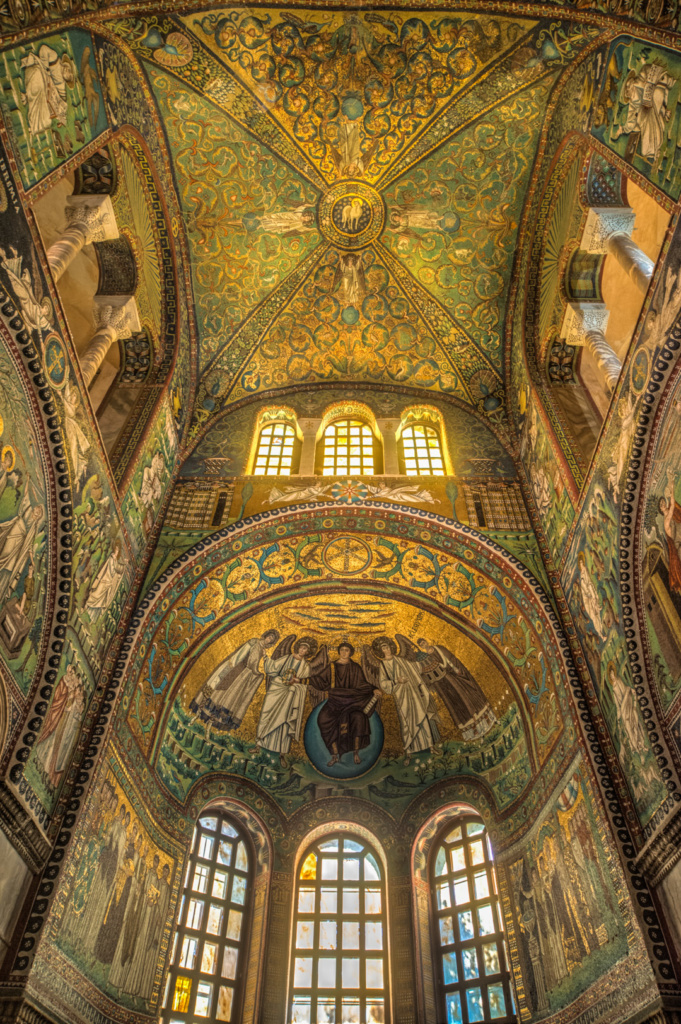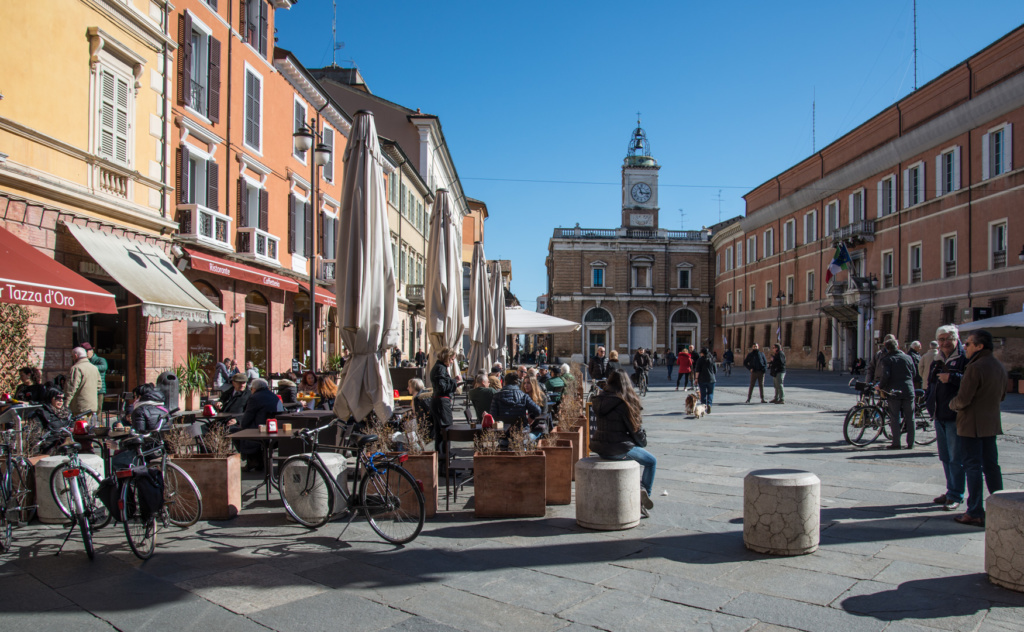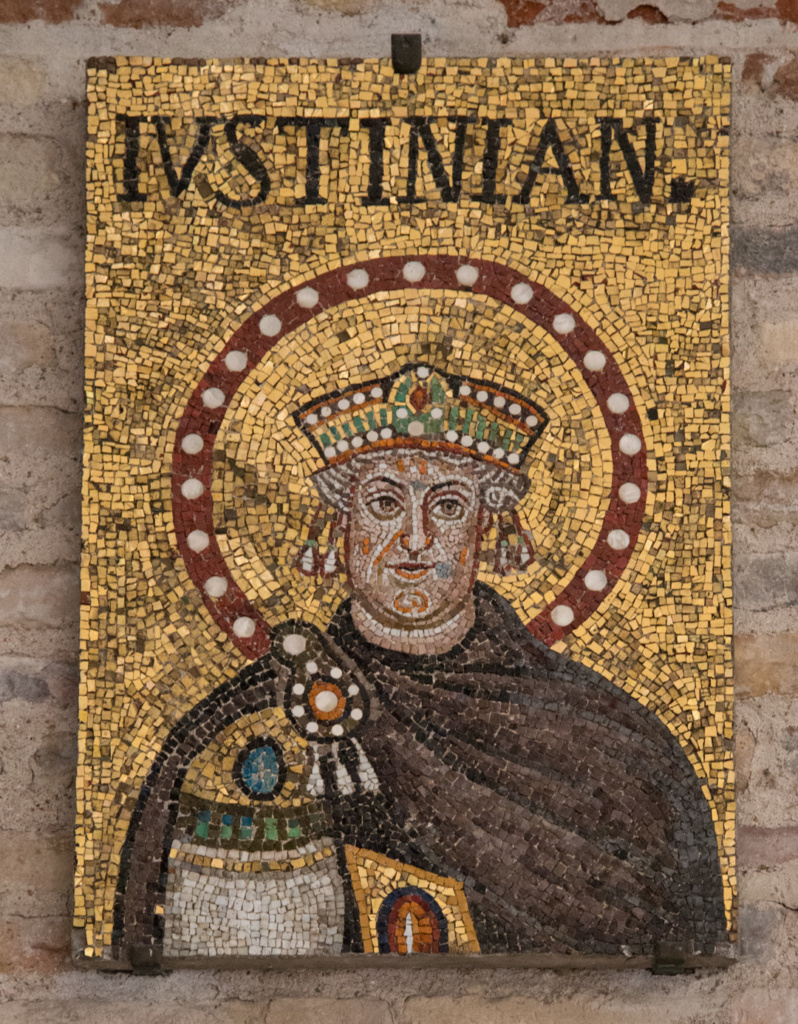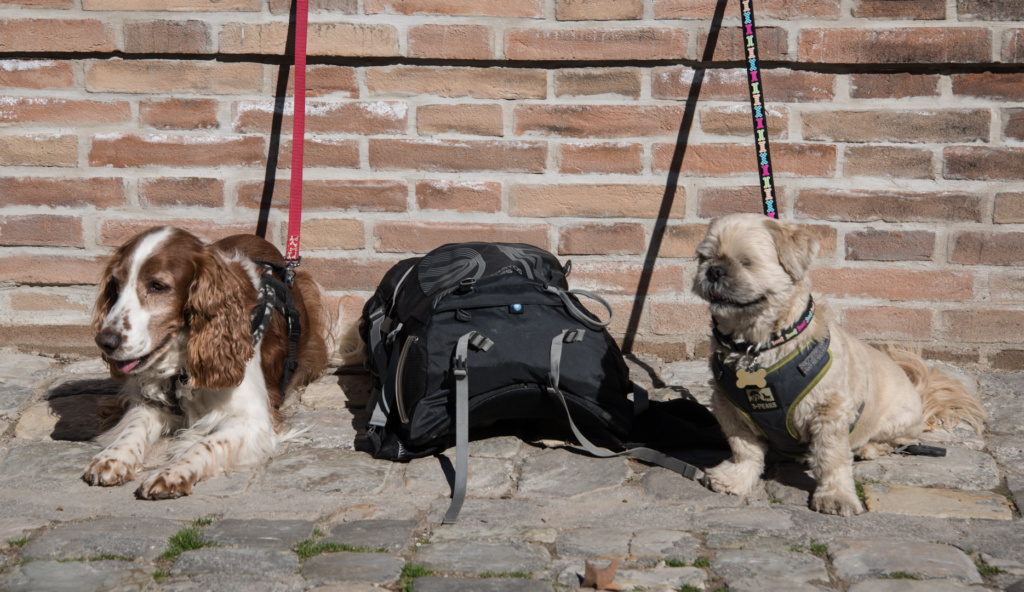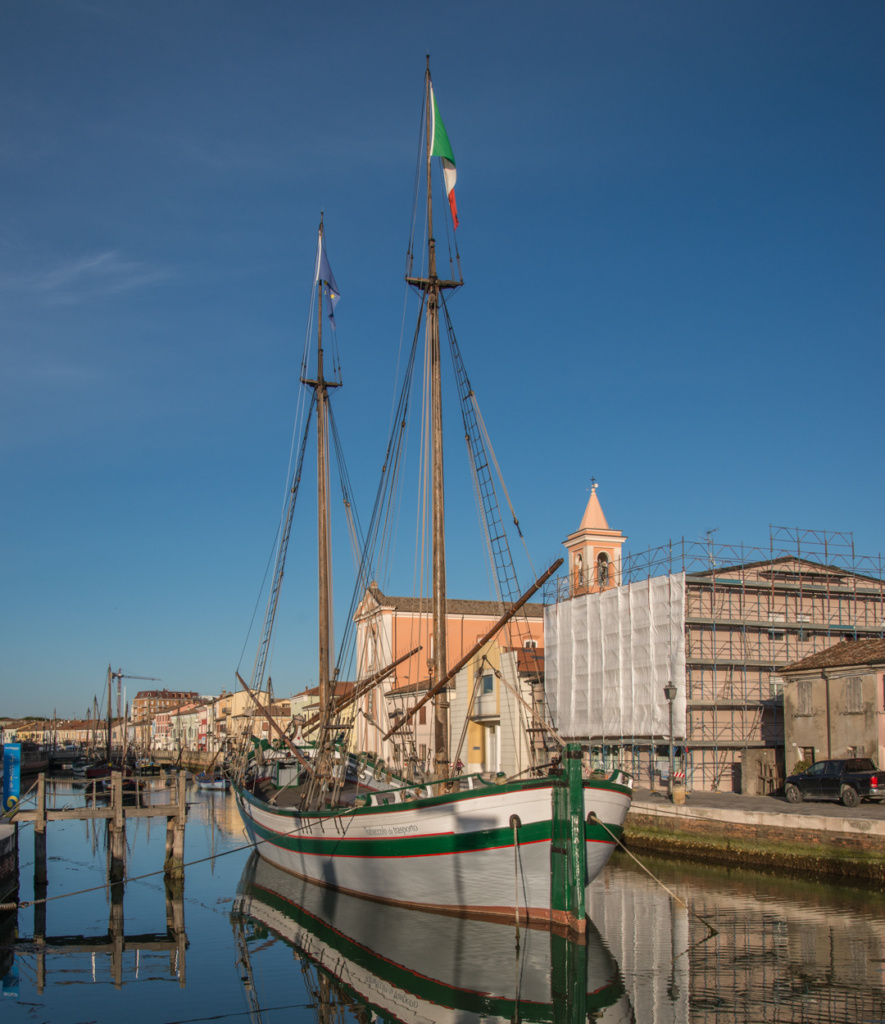Today we “did” Ravenna.
To put Ravenna’s importance into context a little (very little) history is required. As the Roman Empire was breaking up and splitting into a western and eastern empire, the western emperors, casting around for a city that would be less vulnerable to barbarian invaders than Rome, chose Ravenna, because it was surrounded by malarial swamps!! So as the capital of the western empire, in the 5th century the empire’s remaining wealth was used to build spectacular Christian monuments.
Ravenna did not turn out to be any better than Rome for defensive purposes, but when it was overrun by the Visigoths in the mid 5th century, they made it their capital and as new Christian converts they further enhanced the churches.
The result is that although Ravenna is no longer surrounded by swamps, it still has some of the finest early Christian mosaics in the world. Another UNESCO World Heritage site. The most spectacular are housed in the Basilica di San Vitale, Mausoleo di Galla Placidia, Basilica di Sant’Apollinare Nuovo and Battistero Neoniano.
So Sarah and I put on our best walking shoes and set off. Ravenna is a very pleasant city to move around. Most of the centre has been pedestrianised. The 5th century buildings are fairly plain brick from the outside, but once you get through the door the vibrance of the 1500 year old mosaics are spectacular. Ravenna was in close contact with Byzantium (Istanbul) on the other side of the Adriatic and so the mosaics are heavily influences by the easter empire’s style of art, holy figures on a background of gold leaf.
This is not the tourist season and so some of the places we had to ourselves, but today seemed to be school outing day in Ravenna and in the Basilica di San Vitale in particular one school group stood in the middle of the key mosaics for what seemed like hours while the teacher appeared to hold a lesson there: asking the class questions and waiting for hands to go up, just like a classroom. Frustrating for the other visitors.
Of course Mabel and Melek were not permitted to view the mosaics, so Sarah and I took it in turns to look after them while the other went into the relevant monuments.
Our tour of Ravenna took all morning and then we decided to move on to the Adriatic Coast. A quick 20 mile journey brought us to the busiest stopping place of our trip so far in the little port of Cesenatico (44.198768, 12.391386). The aire is scruffy and looks as if it plays host to some long term residents, but it’s free. A walk into the centre shows it to be a busy and prosperous fishing cum tourist town. There is a long canal (surveyed by Leonardo Da Vinci for Cesare Borgia!!) running through the middle to the sea, lined either side by designer shops and smart restaurants. Considering it is out of season Cesenatico is buzzing.
The canal plays host to some replica sailing ships, but for the most part working fishing vessels. There are dozens and dozens of trawlers. It makes me wonder how Italy can maintain such a sizeable fishing fleet in a small town on the Adriatic, while in England, surrounded by the sea, I cannot think of a port with half as many working boats. Perhaps, as witnessed by the plethora of seafood restaurants throughout the town, it is because there is a ready market for their products?

